THE RECENT PUBLICITY AROUND THE USE OF GLYPHOSATE HAS LED TO CONSIDERABLE PRESS COVERAGE AND DEBATE OVER THE USE OF CHEMICALS AND THEIR PLACE IN OUR TOWNS AND COUNTRYSIDE. OUR MD JAMES HEWETSON-BROWN LOOKS AT GLYPHOSATE WITH WILDFLOWERS, BIODIVERSITY AND WILDLIFE IN MIND.
The Glyphosate question
Glyphosate, commonly known as Roundup (the most common of many brand/trade names) has been in the spotlight for the last few years and is due for ‘reauthorisation’. The reauthorisation process involves reassessment of the safety issues surrounding the use of the chemical by the European Chemicals Agency and their recommendation is taken into account by the European Commission.
In advance of the vote, one recent study by The International Agency for Research on Cancer (IARC) concluded that Glyphosate is “probably carcinogenic to humans” and this alarming report has led to a great deal of press coverage about the pros and cons of glyphosate together with the wider use of chemicals in the UK.
Other reports such as those from the World Health Organisation and the European Food Safety Authority say that Glyphosate is safe to use.
Glyphosate – getting the balance right for nature
With a background in farming as well as a profound love for wildflower environments, I do see the benefits of Glyphosate use and yet can understand the concerns of those who worry about the potential long term harmful effects Glyphosate may bring. At Wildflower Turf Ltd we advocate the use of Glyphosate (applied strictly to manufacturer’s recommendations) for the preparation of areas using our Wildflower Earth product.
The application of Glyphosate creates an initial weed-free environment where wild flowers can thrive. My experience in cultivating wild flowers has taught me that they are not easy to establish for many reasons. Some conditions will suit them and they can establish with little or no effort, but these conditions are rare! In order to maintain and improve this species rich, biodiverse habitat and the resulting benefits to wildlife, wildflowers need our help. To create long term biodiverse habitats using our popular Wildflower Earth, we recommend the application of Glyphosate prior to laying the growing medium to create the ideal conditions for growth.
Using establishment methods that are tried and tested will ensure their success. There is a great deal of interest in maintaining and developing wildflowers. The demand for wildflower seed and Wildflower Turf has never been higher but there is a risk that if results disappoint, and developing these biodiverse areas becomes difficult, this interest will wane. We have concluded that the potential negative effects of an application of Glyphosate are far outweighed by the many years of biodiversity a well-established wildflower area will produce.
As with many other sustainability issues we face, humans are confronted with identifying the correct level of ‘intervention’ in natural systems that create a long term, healthy environment which we can all enjoy.
Glyphosate efficiency
There is no doubt that if you are a green plant then Glyphosate is a very efficient killer! However carefully it is applied, if you walk on it and forget to choose your route back, you can find neat footprints of dead grass across the lawn where the residue on your feet has done its job! Similarly, spraying it on a breezy day means any spray drift that lands on green plants will lead to their swift demise.
It has been suggested that the harmful effects of Glyphosate go beyond green plants. Glyphosate has been accused of killing butterflies and bees, yet there is very little scientific evidence to support this. Glyphosate will kill the habitat that supports the butterflies and bees without doubt, and with no suitable habitat the bees and butterflies will perish. But is this an issue to do with the user’s application of the chemical, or a fundamental problem with Glyphosate itself?
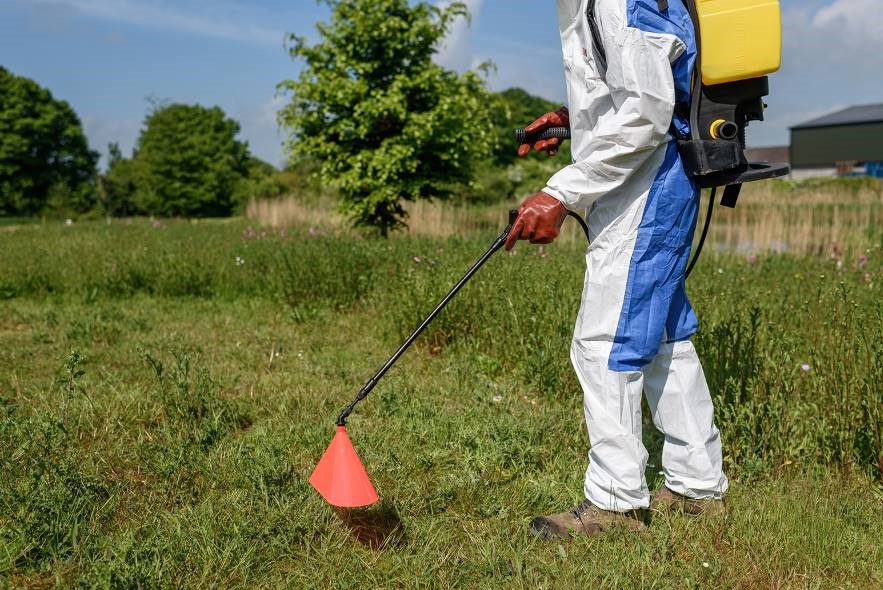
Earth Application
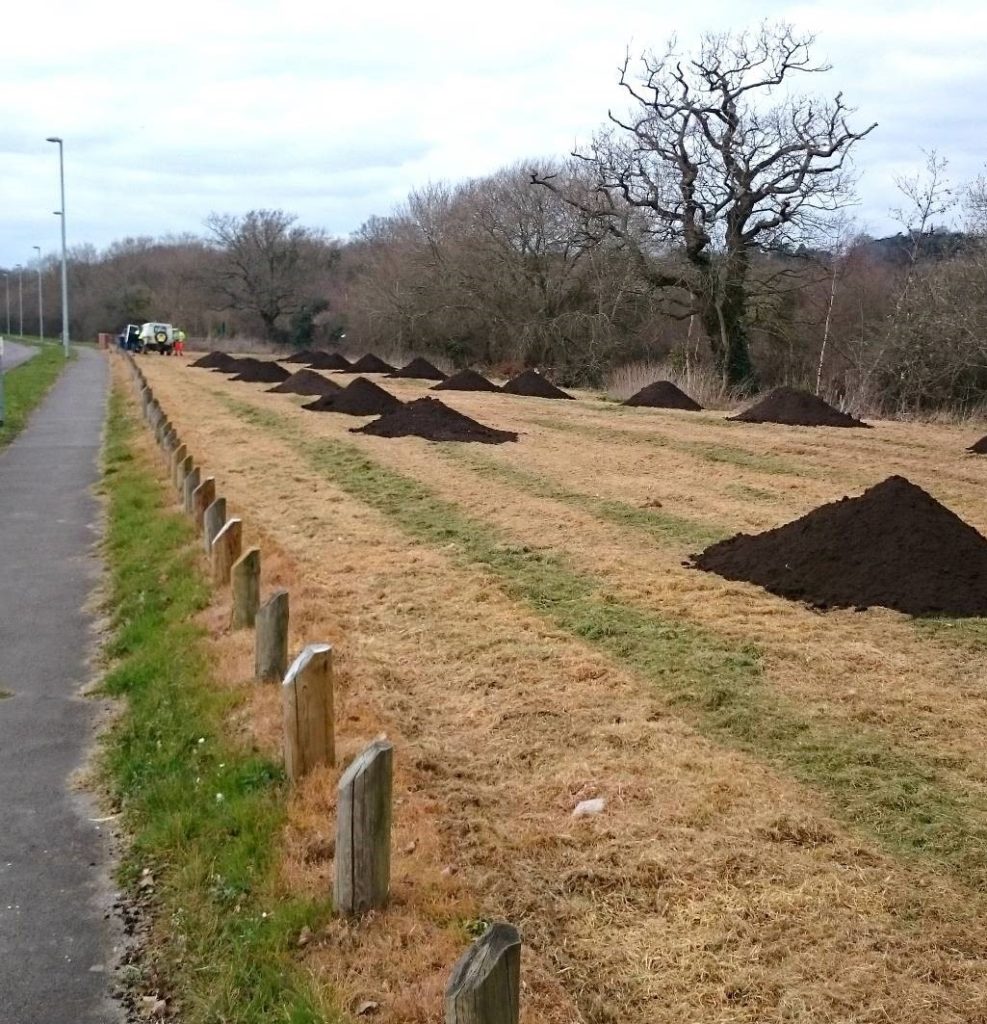
Alternative Chemical Weed Control
There are a number of chemicals that will do a similar job to Glyphosate, but too many to name or list here. However, there are few that have been around for as long as glyphosate’s 42 years of use. Not many alternatives have this track record and ignoring this history shouldn’t be a hasty decision given the findings of most regulatory bodies. The diesel saga is an illustration that sometimes single issue ideals – for all the right reasons – can lead to greater problems rather than being the panacea that leads to positive change.
Alternative Non-Chemical Weed Control
With the worry that Glyphosate is unsafe, has come a number of alternative weed control methods where chemicals are not involved. These are widely promoted on line, from electric lances and steam treatments to burners and weed suppression mats.
From a wildflower establishment position, one of the best chemical free options is the use of a turf cutting machine. Existing plant material is completely removed to make way for the wildflowers. These machines can be hired and are easy to operate, especially in stone free soil and on an existing lawn or grass sward. Once the plant material is removed a more standard approach to seeding or turfing can be used. The downside is the user is left with a lot of residual turf to get rid of and this will add to the cost as well as the carbon and health impacts of fuel used to power the machine.
At Wildflower Turf we do not recommend any of these because most require repeated treatments and take a long time to either apply – electric lances and burners – or to work – weed suppression mats. In a commercial production system Glyphosate is still the most successful alternative in delivering a balance between chemical use and long term biodiversity gains.
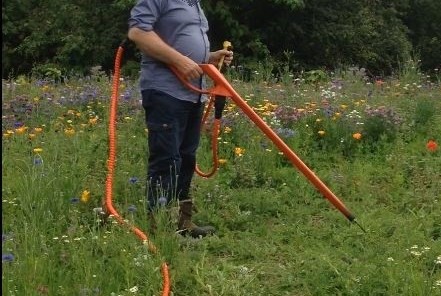
One alternative available to farmers will be the widespread return to ploughing. Large areas of ploughing is used relatively little now a days as it is time consuming and uses a great deal of diesel (and emissions). Glyphosate and the use of less power hungry machines has superseded this crop establishment technique. ‘Minimum tillage’ and ‘no till’ systems rely on Glyphosate to clear the soil of plants to give a competitive start for the new crop. These systems are less aggressive to soil and soil structure. Studies have shown there are 53% more earthworms in no plough agricultural systems. However, as a way of removing green cover, landscapers can follow the principle of ploughing using heavy cultivation tools. But it is not enough to only rotovate the surface. This will simply chop up the green cover but does not invert it. Without Glyphosate or some form of weed control these plants will need to be properly inverted in order to stop them re-growing and competing with the establishment of the desired new seed.
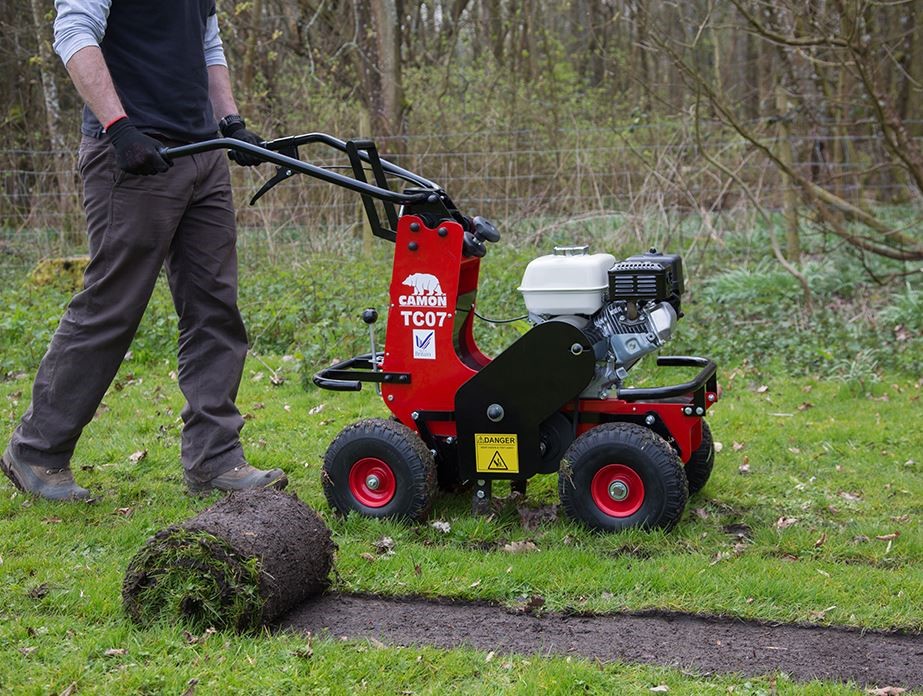
Quote – “ONCE ESTABLISHED, NATIVE WILDFLOWERS WILL PROVIDE LONG TERM FLORA AND FAUNA WITHOUT THE NEED FOR ANY CHEMICALS”
In Summary
Glyphosate is a means to an end. Use it correctly (according to the manufacturer’s advice, in optimum weather conditions and applied accurately to cover the WHOLE of the target area) and it will significantly help with the establishment of wildflowers. If used correctly, you should end up with a healthy and well established meadow and there will be no need to use glyphosate on the area again. We have a meadow that is now in its 14th year and we used glyphosate at the start but have not used it in this area since. The end result has been a biodiverse habitat that supports all sorts of flora and fauna.
Remember for a wildflower space to really work it has to establish well. If it doesn’t establish well, the chances are it will get taken over by weeds and grasses. Where this happens, the likelihood is that those responsible for the area will give up on it and find an alternative. This alternative will most probably be a regularly mown grass area and biodiversity and wildlife will be the worse for it.
Get wildflowers right and they offer a long term option that greatly improves biodiversity, colour, habitats for wildlife, drought tolerance, and a number of other solutions for Urban Greening and Green Infrastructure.
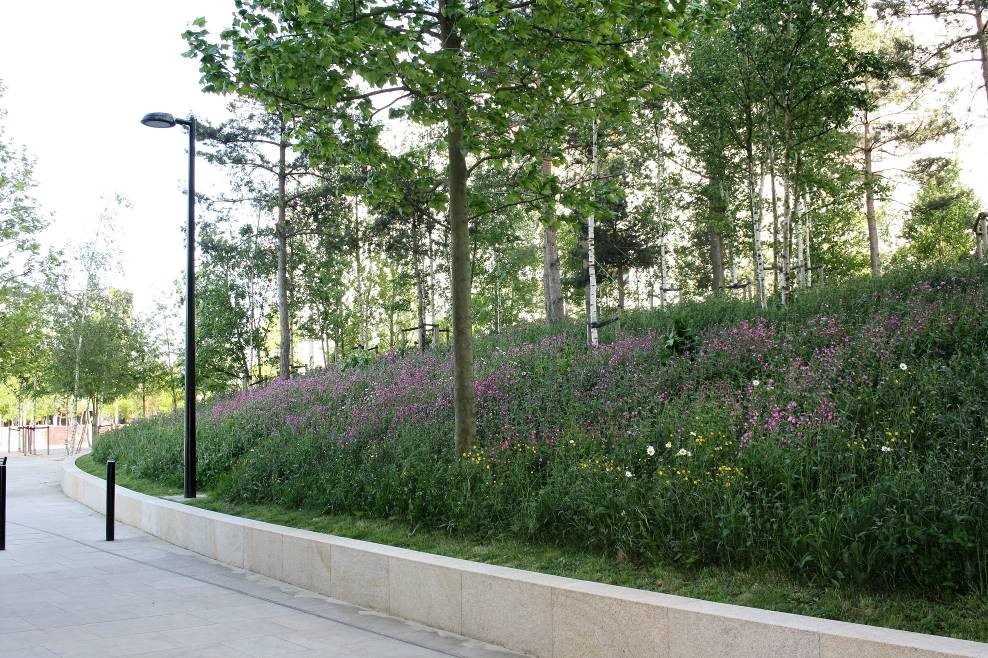
If in the future, Glyphosate is proved to be dangerous and it is not reauthorised for use, there are alternative ways of establishing wildflowers. But for now it remains the most cost effective and efficient option and a valuable tool for landscape professionals.
For further details on creating a successful wildflower meadow and ongoing maintenance please refer to How to make a Wildflower Meadow